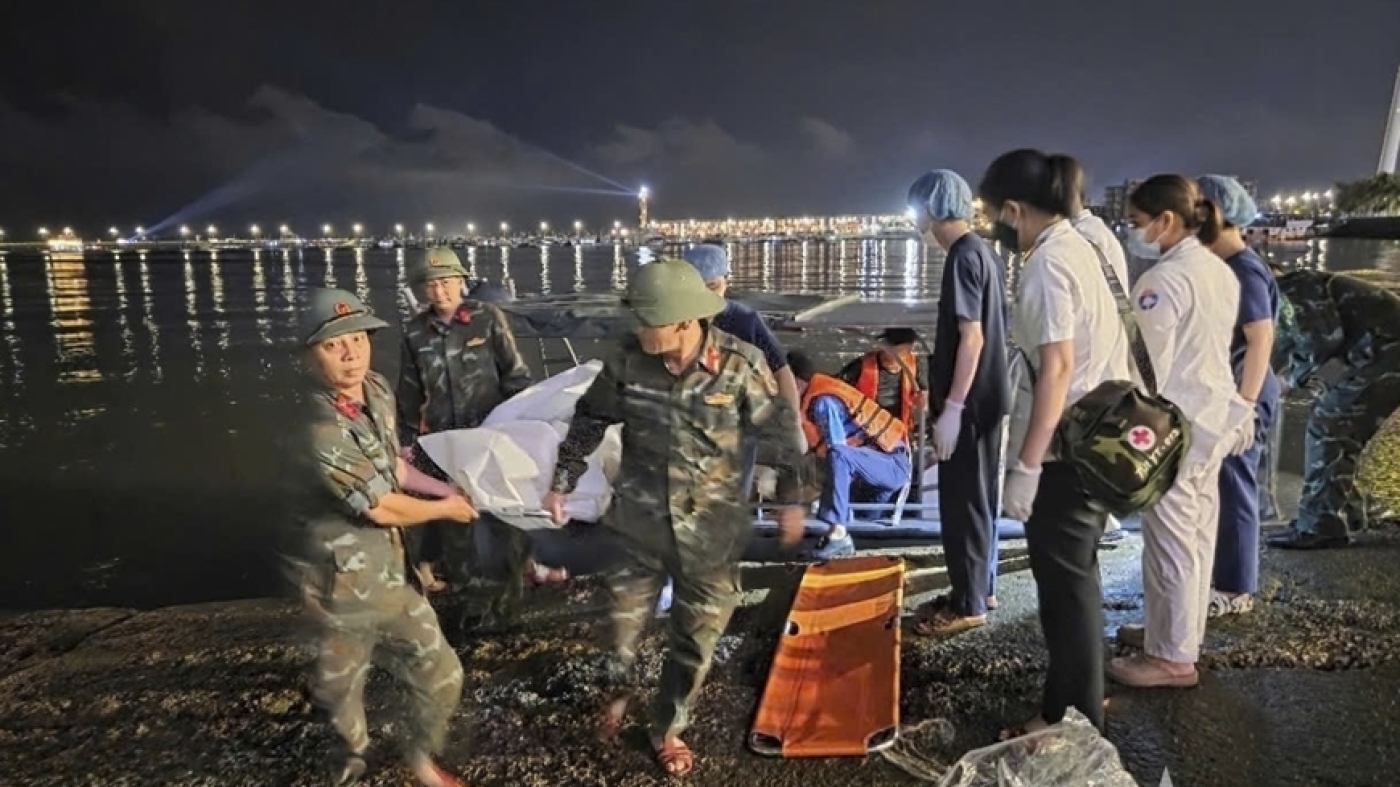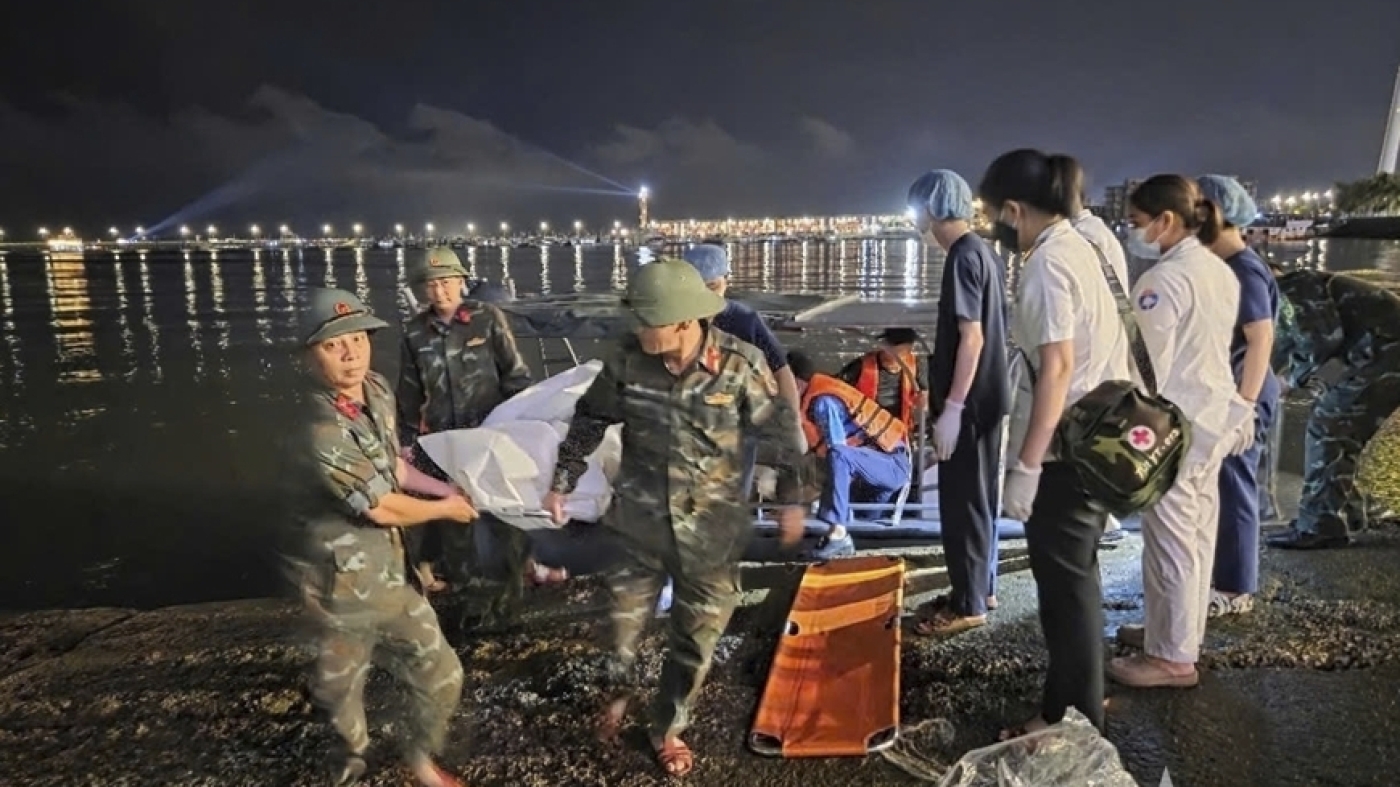The Ha Long Bay Tragedy: A Comprehensive Analysis of the Tourist Boat Capsizing
The Unfolding of a Maritime Disaster
The serene waters of Ha Long Bay, a UNESCO World Heritage site renowned for its breathtaking limestone karsts and emerald waters, became the stage for a heart-wrenching tragedy on a seemingly ordinary Saturday afternoon. The “Wonder Sea,” a tourist boat carrying 48 passengers and five crew members, capsized during a sudden and violent thunderstorm. The incident, which unfolded with startling rapidity, left 34 people dead and 19 others injured, marking one of the deadliest maritime accidents in Vietnam’s history. The event not only underscores the inherent risks associated with maritime tourism but also raises critical questions about safety regulations, disaster preparedness, and the broader implications for the tourism industry.
The Sequence of Events: A Perfect Storm
The incident began with a sudden shift in weather conditions. Eyewitness accounts and initial reports described a calm afternoon abruptly shattered by a powerful thunderstorm, characterized by heavy rain and strong winds. The “Wonder Sea,” a two-deck wooden boat, was caught off guard by the storm’s intensity, leading to its capsizing. The speed of the event likely contributed to the chaos, making effective response measures significantly more challenging.
The location of the capsizing added another layer of complexity. Ha Long Bay’s intricate geography, with its thousands of limestone karsts and narrow waterways, can create localized and unpredictable weather patterns. Sudden squalls and localized thunderstorms are not uncommon in the region, posing a constant threat to maritime activities. The bay’s stunning beauty, while a major draw for tourists, also presents unique challenges for navigation, particularly when visibility is compromised by heavy rain or fog.
Contributing Factors: A Multifaceted Analysis
While the immediate cause of the capsizing was the sudden thunderstorm, several factors may have contributed to the severity of the incident:
Weather Forecasting and Communication
The effectiveness of weather forecasting and communication systems is crucial in mitigating risks in maritime environments. Questions have been raised about whether there was adequate warning of the impending thunderstorm and whether timely warnings were disseminated to boat operators and tourists. Gaps in this area could have left the “Wonder Sea” and its passengers unprepared for the storm.
Boat Design and Stability
The design and stability of the “Wonder Sea” itself warrant scrutiny. Was the vessel adequately designed to withstand strong winds and rough seas? Overloading, improper weight distribution, or inherent design flaws could have compromised the boat’s stability, making it more susceptible to capsizing in adverse weather conditions. The boat’s two-deck structure and wooden construction have been cited as potential factors in its instability.
Safety Regulations and Enforcement
The adequacy of safety regulations for tourist boats operating in Ha Long Bay is another critical area of concern. Were there adequate regulations in place, and were they strictly enforced? This includes requirements for life jackets, emergency equipment, crew training, and adherence to safe operating procedures. Lax enforcement or inadequate regulations could have increased the risk of accidents and reduced the chances of survival.
Crew Training and Emergency Response
The crew’s preparedness and response capabilities are critical in the immediate aftermath of an accident. Questions have been raised about whether the crew was adequately trained to handle emergency situations, including sudden storms and capsizing. Did they have clear protocols for evacuating passengers and providing assistance? The crew’s response to the emergency has been cited as a factor in the high number of casualties.
Passenger Awareness and Preparedness
Passenger awareness and preparedness can significantly improve survival rates in emergencies. Were passengers adequately informed about safety procedures and the potential risks of maritime excursions? Were they provided with life jackets and instructions on how to use them? Reports suggest that many passengers were not wearing life jackets at the time of the capsizing, highlighting potential gaps in safety briefings and equipment provision.
The Human Cost: Lives Lost and Communities Shattered
Beyond the statistics and technical analysis, it is crucial to remember the human cost of this tragedy. The loss of 34 lives has left families shattered and communities grieving. Each victim represents a unique story, a life cut short, and a void that can never be filled. The emotional toll on survivors, witnesses, and rescue workers is immense. The tragedy has also cast a shadow over the tourism industry in Ha Long Bay, a vital source of income and employment for the local community. Concerns about safety may deter tourists from visiting the area, potentially leading to economic hardship.
Recommendations for Enhanced Safety and Prevention
To prevent similar tragedies from occurring in the future, a comprehensive review of safety regulations and practices is urgently needed. This review should encompass the following areas:
Strengthening Weather Forecasting and Communication
Invest in advanced weather forecasting technology and establish robust communication systems to disseminate timely warnings to boat operators and tourists. Implement mandatory weather briefings for all maritime excursions. Authorities should also consider establishing a real-time weather monitoring and alert system for the bay.
Enhancing Boat Design and Stability Standards
Develop and enforce stringent standards for boat design and stability, ensuring that vessels are capable of withstanding adverse weather conditions. Conduct regular inspections to verify compliance. The use of modern materials and designs that prioritize stability and safety should be encouraged.
Reinforcing Safety Regulations and Enforcement
Strengthen safety regulations for tourist boats, including requirements for life jackets, emergency equipment, crew training, and passenger briefings. Increase the frequency and intensity of inspections to ensure compliance. Impose significant penalties for violations. Authorities should also consider implementing a certification system for tourist boats, with regular safety audits and inspections.
Improving Crew Training and Emergency Response
Provide comprehensive training to boat crews on emergency response procedures, including evacuation techniques, first aid, and search and rescue operations. Conduct regular drills to test their preparedness. Crew members should also be trained in basic weather forecasting and navigation skills to better anticipate and respond to changing weather conditions.
Promoting Passenger Awareness and Preparedness
Develop and disseminate clear and concise safety information to passengers before and during maritime excursions. Provide life jackets to all passengers and ensure that they know how to use them. Safety briefings should be mandatory for all passengers, and safety equipment should be readily accessible and clearly marked.
Investing in Search and Rescue Capabilities
Enhance search and rescue capabilities in Ha Long Bay, including the deployment of well-equipped rescue vessels and the training of specialized rescue teams. Authorities should also consider establishing a dedicated search and rescue coordination center for the bay, equipped with advanced communication and navigation technology.
A Call for Accountability and Action
The capsizing of the “Wonder Sea” in Ha Long Bay is a tragedy that demands accountability and decisive action. Authorities must conduct a thorough and transparent investigation to determine the root causes of the accident and hold those responsible accountable. This investigation should not only focus on the immediate circumstances of the capsizing but also examine the broader systemic issues that may have contributed to the tragedy.
Furthermore, it is essential that authorities work closely with the tourism industry, local communities, and international experts to implement the recommendations outlined above. This collaborative effort is crucial to ensuring that Ha Long Bay remains a safe and enjoyable destination for tourists from around the world.
A Lasting Tribute: Remembering the Victims and Building a Safer Future
The most fitting tribute to the victims of this tragedy is to learn from the mistakes of the past and build a safer future for maritime tourism in Ha Long Bay. By strengthening safety regulations, improving emergency response capabilities, and promoting a culture of safety, we can honor the memory of those who were lost and prevent similar tragedies from occurring in the future. This requires a sustained commitment from authorities, the tourism industry, and the community as a whole. Only through collective action can we ensure that Ha Long Bay remains a jewel of Vietnam and a safe haven for all who visit its shores. The tragedy serves as a stark reminder of the fragility of life and the importance of prioritizing safety in all aspects of tourism. It is our collective responsibility to ensure that the lessons learned from this tragedy are not forgotten and that the victims’ lives are honored through meaningful action and change.








